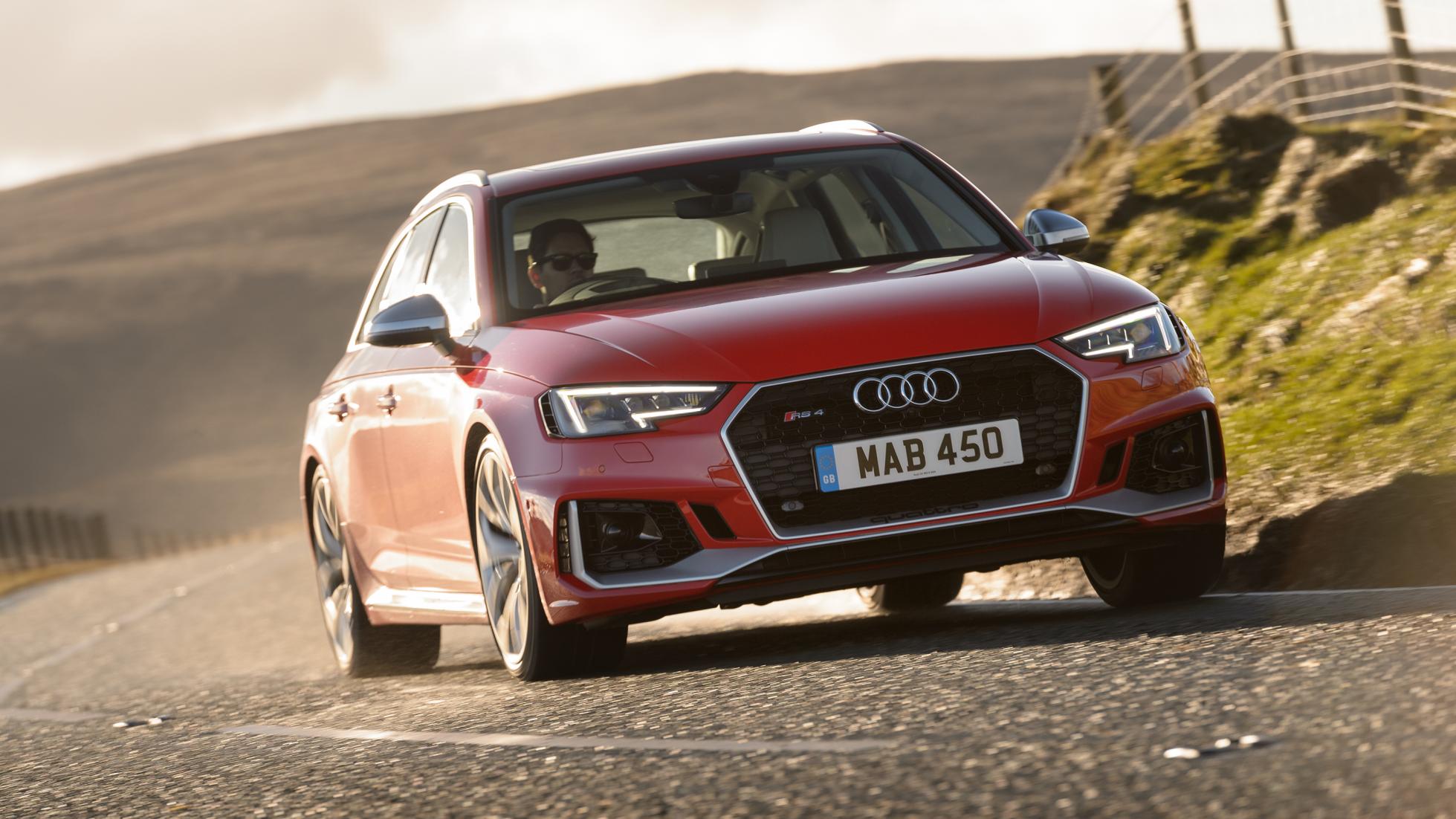Audi RS4 review: 444bhp Avant on wintry UK roads
Guess so. It’s the Audi RS4. What supercars would be if they acknowledged real life existed. Tested not on some blissful summer day along dream-like exotic routes, but on cold damp British back-roads.
Khodrocar - Its vastly muscular turbo torque, four-wheel drive and glassy view out should put it head and shoulders above pretty much anything that relies on just two tyres to engage the engine with the roadway.

Remind me. How much engine?
It’s a new 444bhp effort – very similar in power to the revvy old V8, but this time it has twin turbos, which squeeze all that power from just 2.9 litres and six pistons. The torque figure is 442lb ft from just 1,900rpm.
How does that work out?
Mostly it’s a humdinger. For overtaking or blasting out of a roundabout, just aim foot at carpet. It’ll drop a gear then simply catapult away. In the mid-ranges the sound is a rather honeyed blare, an enjoyably old-school noise from such a modern engine.
It is, however, imperfect. Despite all its modernity (hot-V turbo position, twin blowers, variable inlet lift) the throttle response is pretty sleepy. Say you’re rounding an unknown corner, and the vision opens ahead of you. You want power, and you want it now. What you get instead is t…urbo lag.
One solution is to pull it into a gear lower and use big revs, because above about 4,500rpm, the problem is largely gone. But then you crash into the red-line at just 6,300rpm, so that’s not really a solution.
Still, with all that traction you’ll still be making progress?
Oh yes. But just going crazy-fast isn’t really what a sporty car should be about. Indeed in Britain, speed isn’t the point these days. What matters is flow and feel and confidence.
Any of those then?
Confidence to the point of swagger. That’s the Quattro thing. It flows fluidly along too. The engine is lighter than the old V8, and the sport rear differential vectors the torque to pivot the car into a bend.
It’s very nicely balanced in corners, and when those puffers leap into wakefulness, it sets into very subtle but satisfying oversteer. Feel? Through the seat, yes. Through the steering wheel, not really. It’s a command-and-control apparatus, with little two-way intimacy.
Which of the chassis options did that car have?
Good question. Only 20-inch wheels, over the standard 19s. No dynamic ride control (£2,000). No loud ‘sports’ exhaust (£1,250). No active steering (£950). No ceramic brakes (£6,000).
Did you miss them?
Not really. So that’s a total of £10,200 well saved.
The ride is actually as pliant as a not-too-extreme hot-hatchback’s, bearable in town and on motorways. I was on bumpy roads so I didn’t need the sharper ‘sports’ damper setting the dynamic system would have given me. This is Britain – the turbulence was already enough to set Audi’s famously well-attached cabin fittings into a bit of a twitter.
The RS4’s optional Dynamic steering, unusually, locks into a constant ratio in its dynamic setting, which should avoid the unnatural feel such systems usually have. Really then it’s just there to moderate urban wheel-twirling in its ‘comfort’ setting. Not needed.
Ceramic brakes might be good for track work or coming fully loaded down an alp. For solo driving along B-roads in Northants, on the other hand, I certainly didn’t feel deprived.
An estate should be an all-round car. Is this an all-round good drive?
The chassis suits the unpredictable grip of the four seasons, and can take the British rough with the smooth. That feeling of unquenchable confidence is a wonderful everyday asset. The powertrain is mostly magnificent too, especially on roads you know, when right-foot anticipation can cancel out the turbo lag.
And Audi doesn’t muck up the estate part of things. All the space and practicality is taken care of with ruthless excellence, and bestows you some delightful details too. The cabin materials, the driver controls, the connectivity and the interfaces are all exemplary too. Audi, as ever, has that stuff nailed.
Not to mention that wonderful old RS Avant trick of looking like the mechanicals are one size too big for the body. So the statics of the RS4 Avant are most wantable. On most days – and in many conditions – the dynamics are the same.
Source: Top Gear
Latest News


